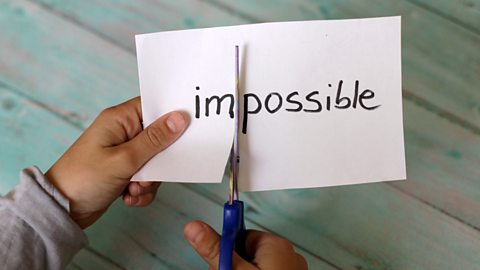This article was first published on 29 September 2020.
The human mind is complex and we are constantly discovering new things about how our minds work.
One area in which research is generating new insights is the study of learning, which is not as straightforward as we thought. Understanding a little about how learning works can help you study more effectively. We asked education writer and speaker David Didau to give us the lowdown.
David: It may be that we’ll never fully understand the complexity of the human mind. If our brains were simple enough for us to understand, we’d be too simple to understand them. But we do know enough to draw some fairly sound conclusions.
One area in which research is generating new insights is the study of learning, which is not as straightforward as we thought. ‘Learning’ is defined as the long-term retention of knowledge, and the ability to transfer it to different contexts.
Learning is therefore invisible, as we can’t see it immediately in the here and now. All we can see is performance. For instance there are times when we can perform a task successfully and remember nothing about how to do it again in the future.
One way of trying to get to grips with the mechanisms of learning is to understand the Working Memory Model.
Your Working Memory is responsible for all your waking thoughts, and the processing of all experience – your moment to moment conscious experience of life.
Which is all well and good, but processing immediate information is very intensive, and there’s little room to store anything. Working Memory gives us the space to deal with about four things at a time – trying to think about more than four things at once just makes us confused and forgetful.
Luckily, to solve this problem, evolution came up with the rather neat trick of Long-Term Memory. It’s a massive information store which works in conjunction with Working Memory.
What we call ‘learning’ is the transfer of information and experience from the Working Memory over to the data bank that is Long-Term Memory.
Long-Term Memory functions by organising information into schema, or networks. If a new piece of information has a good link to something you already know, it will be connected to the existing schema.
And it seems that once something becomes part of Long-Term Memory, it never gets erased. So why is it that we so often can’t recall something that we once knew well?
It’s because everything in Long-Term Memory has a retrieval strength – that’s how easy it is to remember right now – and a storage strength – how easy it will be to remember later.
So, a password that you use regularly has a high value for both strengths. A new password might have high retrieval strength, if you keep repeating it to yourself. But if you don't use it for a week, you'll probably forget it, as the storage strength is low.
On the other hand, when you know that you know something, but you can’t quite put your finger on it - like the name of the guy who sang that really annoying song that your brain keeps playing – that information has good storage strength, but poor retrieval strength.
If retrieval strength is increased, then storage strength is weakened – in other words if something is very easy to learn or do in the present, we’re more likely to forget it later.
Conversely, forgetting makes room for retrieval practice to lead to better storage strength.And that gives us the concept of desirable difficulties – if a task is made a bit harder, and requires a bit more effort, as long as it still results in successful retrieval, it’s more likely to lead to long-term storage, or ‘learning’.
One way to create a desirable difficulty is to leave time between periods of learning. This is the Spacing Effect. It’s more effective to revise for a test every other day, than it is to cram every day. The day off makes it slightly harder to remember the material when it’s returned to. Even though that may well make short term performance worse, iit also forces the brain to search for the information in Long Term memory, and strengthens those schema, increasing storage strength.
And when studying, going over and over the same material is not very effective. It’s better to study something once, and then test. This act of retrieval reinforces storage strength and more durable, flexible learning. It’s known as the Testing Effect.
We may still have a lot to learn about how our own minds work, but designing educational experiences based on understanding these points is a step in the right direction.

Your working memory is responsible for all your waking thoughts, and the processing of all experience – your moment to moment conscious experience of life.

When studying, going over and over the same material is not very effective. It’s better to study something once, and then test.

What we call ‘learning’ is the transfer of information and experience from the working memory over to the data bank that is long-term memory.
For more information on the sources used for this film check out this document.

Five ways to revise away from your desk
Study tips to stop you staring at the same patch of wall for hours on end.

Revision and exams: How to be resilient
Advice on how to handle setbacks during revision and exams season.

How to stay motivated
Top tips for staying focused and driven, from children's mental health charity, Place2Be.
